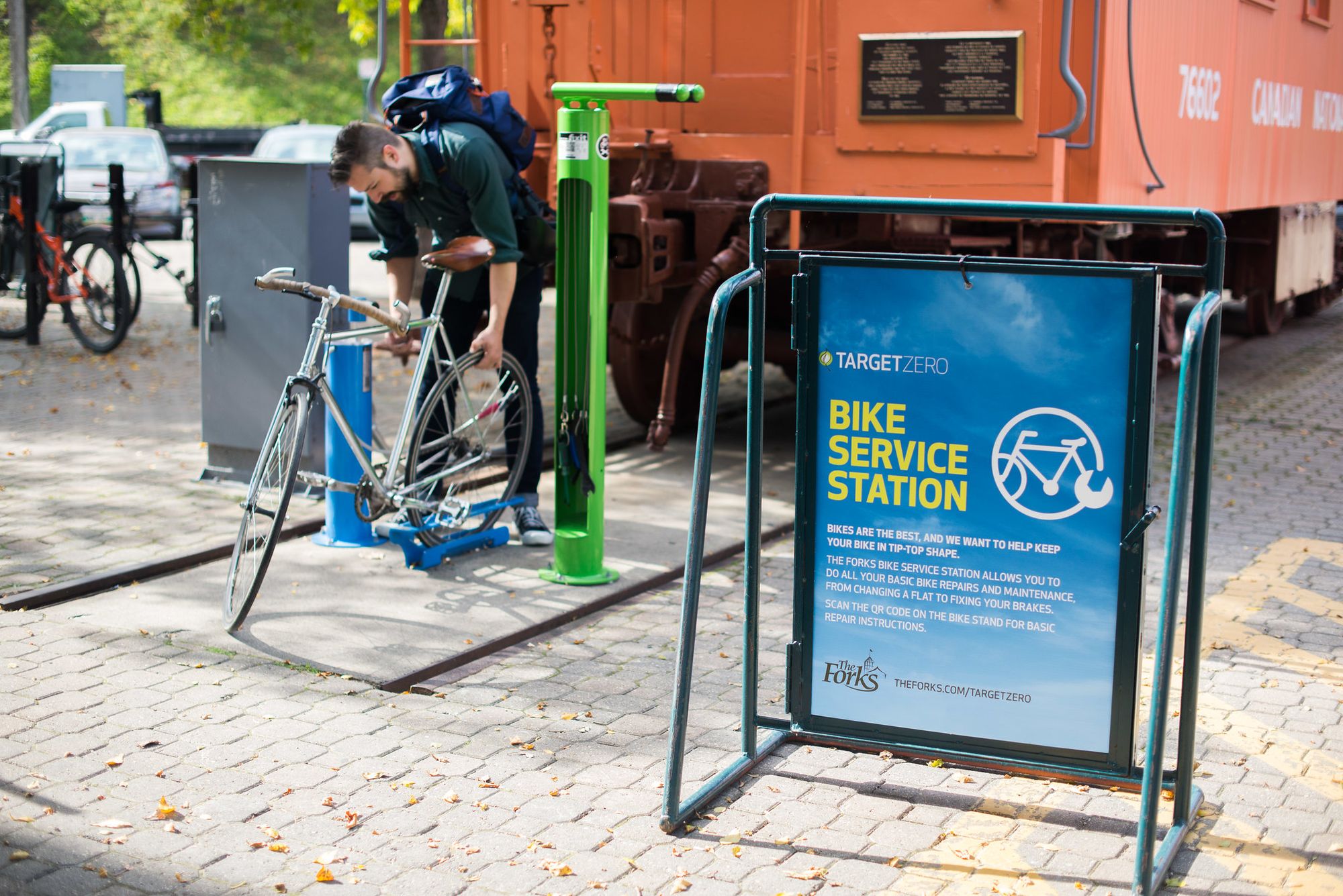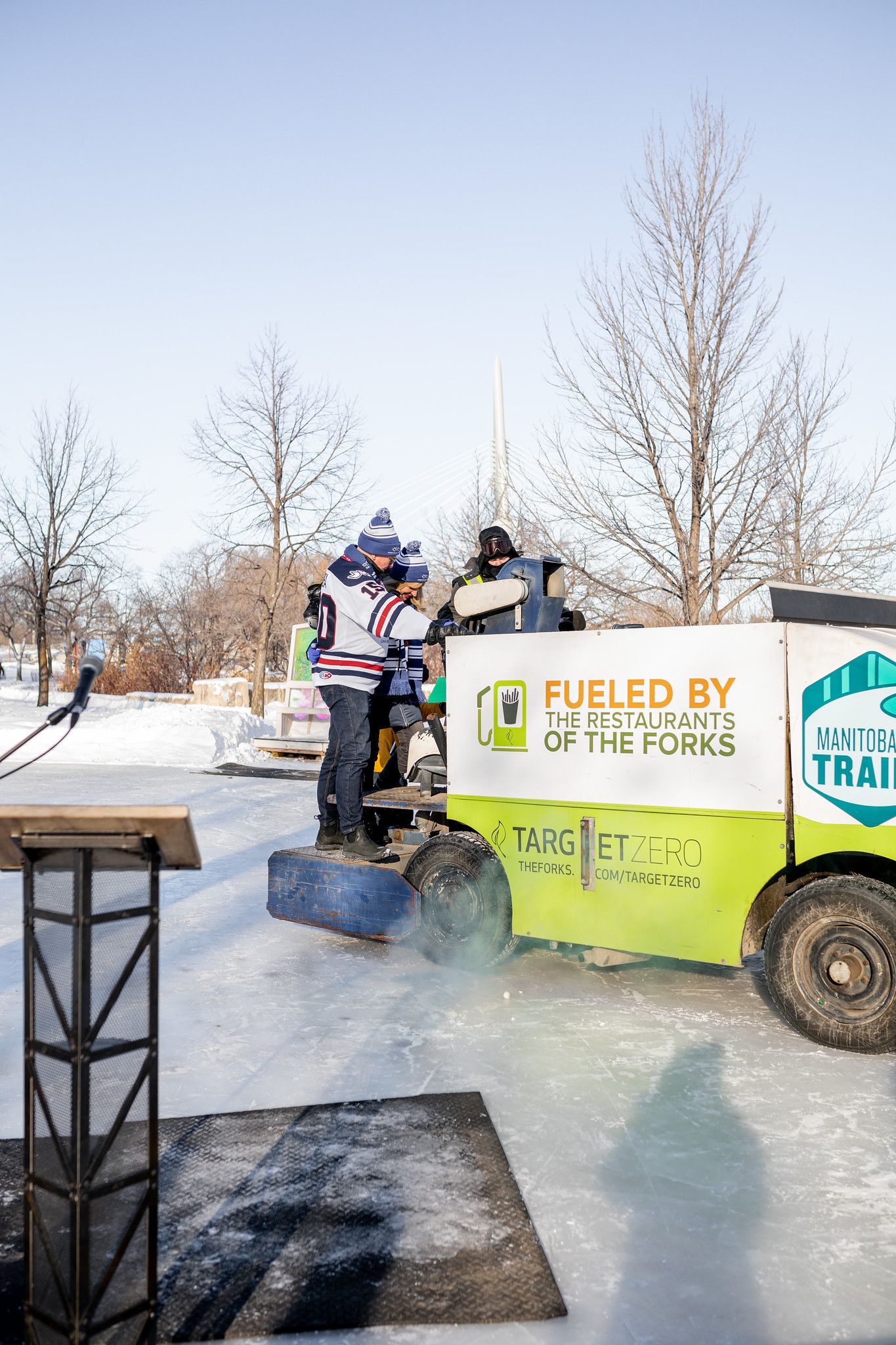Over the past 30 years, an abandoned railyard at the junction of the Red and Assiniboine Rivers in Winnipeg has been transformed into a destination centre with a public market, dining options, museums, and entertainment. Over 4 million people visit The Forks each year and 1,200 people work on the site. In 2005, the board received a number of letters from the public requesting they run The Forks more sustainably. This initiated a comprehensive review of all aspects of their operations. Seventeen years later, there has been a tremendous amount of progress as The Forks works towards Target Zero – zero garbage, zero water waste, and zero carbon emissions.
We asked Dave Pancoe, Special Projects Manager at The Forks, what advice he would offer to other facilities wanting to undertake a similar process.
Take a Seventh Generation Approach
Dave says that the entire operation is viewed through a lens of “where the two greens meet: money and sustainability”.
“We take a seventh generation approach to operations and decision-making,” Dave says. “We take into consideration climate resilience and longevity of both building materials and projects. We’re able to play the long game because we know we’re going to be here for a long time. Some of the return on investment can be amortized over a longer period of time.”
Heating a facility such as The Forks Market is expensive given Winnipeg’s climate and the number of people entering and leaving the building. In addition, they occupy a heritage building so there is very little they can do to insulate the building. The roof-top natural-gas heater units needed to be replaced so they began to study the options. Geothermal heat proved to be an excellent option as they were able to play the long game. It did require significant research as there are not many engineers who know the system, but it has paid off, reducing GHG emissions by 42% and heating costs by 14%. The only natural gas used is for tenant cooking.
Plan Ahead
Dave emphasizes the importance of carrying out studies. On the surface, wind energy looked like an excellent idea, but a year of testing found it wasn’t a valid option. To catch the wind, the tower would have to be so high as to prove unworkable. They are considering the installation of smaller single-purpose turbines at a later date.
Knowing your equipment and thinking several steps ahead is equally important. You may not be in a position to switch to geothermal energy at the moment, but you can make sure that your equipment can be adapted at a later date. You’ll save money in the long run by purchasing a boiler that can run off geothermal energy or a combined system in future rather than purchasing a cheaper one without those options.
The Forks has long-term plans for a residential development on two large surface parking lots. They aren’t equipped to break ground on the project quite yet, but they are drilling the geothermal holes so they are ready and waiting when the time is right.
Get Everyone on Board
Switching tenants from disposable, single-use dishware to reusable dishware was another activity that required planning ahead. It was challenging, Dave says, as they had no direct control and a lot had to happen before they could make the switch. This included changing the lease structure and elevating the dining experience. The tenants now share communal serviceware and a dishwashing station. “At first tenants saw it as a hassle and an additional expense,” Dave says, “but everyone is now on board. It’s brought more people to The Forks and refreshed the dining area.”
The Forks has increased public awareness of Target Zero initiatives by offering public tours run by Green Kids Inc. “Geothermal is our biggest initiative, but it’s invisible,” Dave says. “People notice if they’re hot or cold, but they don’t think about how the heating is run.”

Remove the Barriers
Promoting alternate transit at The Forks has been a two-step process involving improving the infrastructure and removing the barriers. The cycling routes connecting to the site are constantly being improved. They are currently working on a cycling route to complete the connection from Osborne Village to St. Boniface.
In the summer, The Wrench, a local charity promoting cycle use, offers free bike repair on site at The Forks. There is additional programming geared at novice cyclists on how to commute and bus routes.
Before deciding to construct a residential complex on two parking lots, The Forks checked to make sure there was alternate parking close by. There has been talk of a linear walkway and a shuttle bus, but this is on hold until the Railside project gets going.
Adapt to Changing Circumstances
Management took advantage of shutdowns during the pandemic to take a close look at their waste disposal system. They learned that recycling bins around the 53-acre site were not being well used. “There was a lot of wish-cycling,” Dave says. The Forks will continue to recycle glass and metal as they can track where it’s going and there are North American recycling sites. However, there is no market for plastic waste recycling. “Winnipeg is so remote,” Dave says. “Coastal cities can ship waste to overseas markets, but that’s less feasible here.” As a result, The Forks plans to focus on waste reduction rather than recycling with plans to avoid single-use plastics. “You can maybe recycle plastics once, but they’re still here forever,” Dave says.

Creative Reuse
Eighty percent of the waste from the site’s food service producers, the hotel, and yard trimmings is compostable. The Forks uses an in-vessel composter to digest the organic matter and turn it into a nutrient-rich compost to use as top dressing and a soil amendment in their gardens.
With the help of a local mechanic shop, The Forks has found a new use for the waste vegetable oil from deep fryers. It now fuels the site truck, 3 utility vehicles, and the ice resurfacer.
Keep It Simple and Robust
“We tend to shy away from complex solutions,” Dave says. “It’s better to future-proof your situation by sticking with the simplest and most robust rather than the flashiest.” There were plenty of options when The Forks upgraded its lighting system. However, rather than choosing a system with lots of extra features, such as changing colours, they went with a less complicated system that would also be easier for staff to operate.
Switching turf over to prairie grasses was a wholistic solution that increased biodiversity, reduced fuel consumption (doesn’t need to be mowed), and required less irrigation.
Photo Credit: The Forks Winnipeg
See Also: Theatre for the Planet: Green Kids Inc, Winnipeg
EcoFriendly West informs and encourages initiatives that support Western Canada’s natural environment. Like us on Facebook, follow us on Twitter, or subscribe by email.
